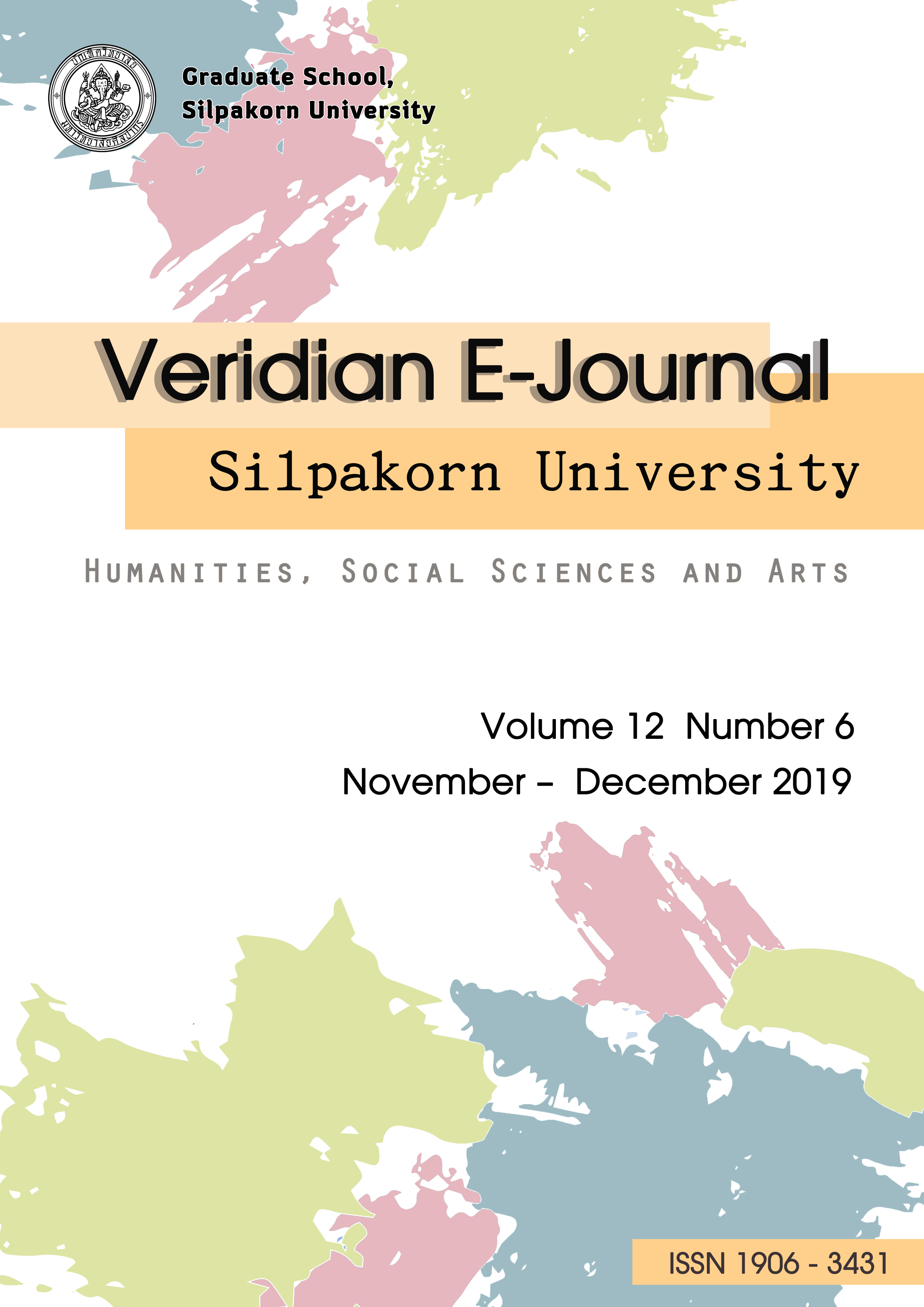การวิเคราะห์สหสัมพันธ์คาโนนิคอลระหว่างการเป็นองค์การแห่งการเรียนรู้กับการเป็นองค์การนวัตกรรม ของสำนักงานคณะกรรมการการศึกษาขั้นพื้นฐาน (Canonic correlation analysis between Learning Organization and Innovation Organization of Office of the Basic Education Commission)
Main Article Content
บทคัดย่อ
การวิจัยครั้งนี้มีวัตถุประสงค์เพื่อศึกษา 1) ระดับการเป็นองค์การแห่งการเรียนรู้และการเป็นองค์การนวัตกรรม ของสำนักงานคณะกรรมการการศึกษาขั้นพื้นฐาน และ 2) สหสัมพันธ์คาโนนิคอลระหว่างการเป็นองค์การแห่งการเรียนรู้กับองค์การนวัตกรรม ของสำนักงานคณะกรรมการการศึกษาขั้นพื้นฐาน กลุ่มตัวอย่างที่ใช้ในการวิจัย คือ บุคลากรที่ปฏิบัติงานในสำนักงานคณะกรรมการการศึกษาขั้นพื้นฐาน (ส่วนกลาง) จำนวนทั้งหมด 300 คน ใช้วิธีการเลือกสุ่มตัวอย่างแบบชั้นภูมิ เครื่องมือที่ใช้ในการเก็บรวบรวมข้อมูล เป็นแบบสอบถามประมาณค่า 5 ระดับ สถิติที่ใช้ในการวิเคราะห์ข้อมูล ได้แก่ ค่าร้อยละ ค่าเฉลี่ย ค่าส่วนเบี่ยงเบนมาตรฐาน และการวิเคราะห์สหสัมพันธ์ คาโนนิคอล ผลการวิจัย พบว่า
1) ระดับการเป็นองค์การแห่งการเรียนรู้ ของสำนักงานคณะกรรมการการศึกษาขั้นพื้นฐาน ในภาพรวมอยู่ในระดับมาก ( = 3.96, S.D. = 0.42) เมื่อพิจารณาเป็นรายด้าน พบว่า ด้านที่มีค่าเฉลี่ยมากที่สุด คือ ด้านเทคโนโลยีการเรียนรู้(
= 4.14, S.D. = 0.55) ในขณะที่ค่าเฉลี่ยต่ำสุด คือ ด้านโครงสร้างที่เหมาะสม (
= 3.79, S.D. = 0.54)
2) ระดับการเป็นองค์การแห่งนวัตกรรม ของสำนักงานคณะกรรมการการศึกษาขั้นพื้นฐาน ในภาพรวมอยู่ในระดับมาก ( = 3.83, S.D. = 0.45) เมื่อพิจารณาเป็นรายด้าน พบว่า ด้านที่มีค่าเฉลี่ยมากที่สุด คือ ด้านการจัดการความรู้ (
= 3.87, S.D. = 0.56) ในขณะที่ค่าเฉลี่ยต่ำสุด คือ ด้านผู้บริหารที่กล้าเสี่ยง (
= 3.75, S.D. = 0.56)
3) สหสัมพันธ์คาโนนิคอล (Rc) ระหว่างชุดตัวแปรการเป็นองค์การแห่งการเรียนรู้กับการเป็นองค์การนวัตกรรม ของสำนักงานคณะกรรมการการศึกษาขั้นพื้นฐาน มีฟังก์ชันคาโนนิคอล 5 ฟังก์ชัน แต่มีเพียงฟังก์ชันที่ 1 และฟังก์ชันที่ 2 ที่มีนัยสำคัญทางสถิติที่ระดับ .01 และมีค่า ( ) คู่ที่ 1 เท่ากับ 0.3595 คู่ที่ 2 เท่ากับ 0.0720แสดงว่ามีความแปรปรวนร่วมกันระหว่างตัวแปรคาโนนิคอลทำนาย (Predictor Composite) กับตัวแปรคาโนนิคอลเกณฑ์ (Criterion Composite) อยู่ 35.95% และ 7.20% ตามลำดับ
This research aims to study 1) The level of being an organization of learning and being an innovation organization of the Office of Basic Education Commission. and 2) Canonic correlation between being a learning organization and an innovation organization of the Office of Basic Education Commission. The sample group used in the research was personnel working in the Office of the Basic Education Commission (Central). Total number of 300 people. Use the method of sampling to select the floor Tools used for data collection. Is a questionnaire estimated at 5 levels Statistics used in data analysis Ie percentage, mean, standard deviation and canonic correlation analysis. The research found that.
- Level of learning organization of the Office of Basic Education Commission. In the overall picture, it is at a high level (
= 3.80, S.D. = 0.36). When considering each aspect, it was found that the most average aspect was learning technology (
= 4.06, S.D. = 0.60). While the lowest mean is the support atmosphere (
= 0.72, S.D. = 0.59).
- Level of innovation organization of the Office of Basic Education Commission. In the overall picture, it is at a high level (
= 3.87, S.D. = 0.41). When considering each aspect, it was found that the most average aspect was knowledge management (
= 3.76, S.D. = 0.58). While the lowest mean is the executive who dares to risk (
= 3.65, S.D. = 0.56).
- Canary correlation (Rc) between the variable of learning organization and innovation organization of the Office of the Basic Education Commission. There are 5 function functions, but only function 1 and function 2. With statistical significance at the level of .01 and with values ( ), pair 1 is 0.3595, pair 2 is 0.0720. Indicates that there is a common variance between the predictive composite variables and the 35.95% Criterion Composite variables and 7.20% respectively.

